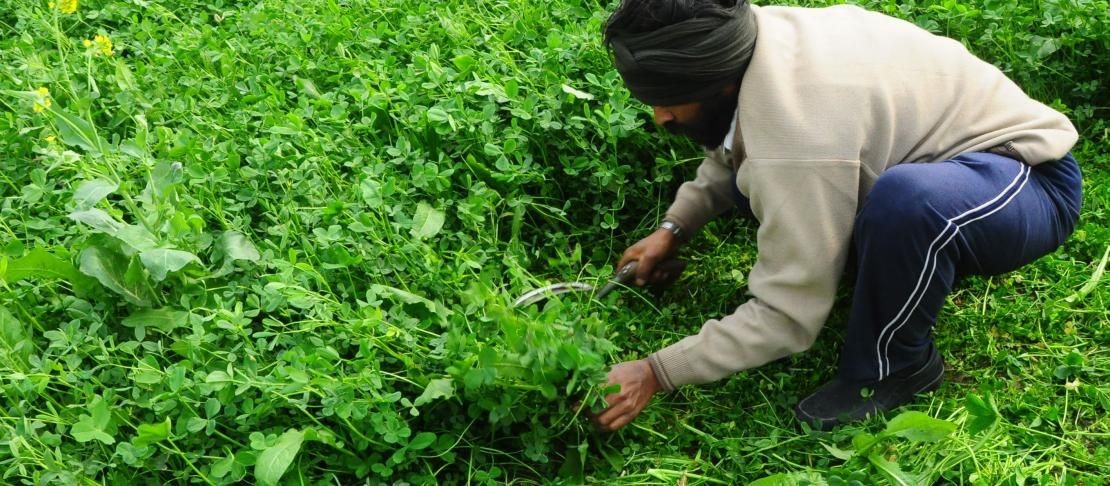A single super-hero or a bundle of them for crop insurance in Asia?

Climate-smart agriculture conference in Hanoi assesses what works and what does not in crop insurance.
In the face of a planet confronted with a climatic crisis with visible impacts on agriculture and food security, the question before many is how to meet the overarching goal of climate-risk management. Especially applicable to the field of agriculture is the challenge behind designing programs that address a multitude of issues, with sustainability in operations rather than standalone projects addressing a single or isolated risk. This was an aspect that was discussed in details at a recent conference titled ‘Climate-smart agriculture in Asia: beyond pilot evaluations and models’ in Hanoi, Vietnam, organized by the CGIAR Research Program on Climate Change, Agriculture and Food Security (CCAFS).
Rallying around a pivot of crop insurance
Discussions were assembled around the assessment of the ongoing successes of national crop insurance schemes in the region, primarily India’s Prime Minister’s Crop Insurance Scheme. The scheme serves as a point of reference to assess what works and what does not in the field of crop insurance in the region and whether the successes met by this scheme can be replicated via South-South learning. The celebrated points of departure for the scheme have been the low premium burden on the farmer beneficiaries, the emphasis on technology use with an ambition to cover 50% of the cropped area in the country. The scheme makes it evident that for a successful crop insurance design, the key parameters are top class ownership of the scheme, multi-stakeholder involvement, proper loss assessment, pragmatic adjustment of insurance unit size and cluster formation, transparent tender process, digitization, and regulated pricing among others. Nevertheless, challenges remain to be addressed such as standardization in pricing, ensuring proper timing in terms of the entire management eco-system of the scheme, toll-free communication channel for company-beneficiary interaction etc.
Potential of South-South learning
It is imperative to point out that crop insurance schemes for such magnified population seems to be working out better in the Asian nations like India and China with the former having approximately 51.8 million hectares of area insured and the latter that of 115 million. Therefore, can a South-South learning be initiated and affected to revolutionize the crop insurance space in the region? Most importantly, is the ground in other Asian countries fertile enough to ensure a successful germination of a good crop insurance scheme?
To address this, during the event, the focus shifted onto the experience of Nepal. Although different pilots have been tried and tested in Nepal, they have not reached scale which can be attributed to a number of factors, mainly its incipient nature in Nepal that only emerged on a national scale around 2012. Nepal, with diverse socio-economic standards, has proven to be a difficult ground for designing an integrated program of risk mitigation through crop insurance. Most importantly, the country’s case highlights how crucial it is to have farmers’ literacy regarding such programs in combination with capacity training. South-South learning can, therefore, be prioritized to assist nations in arriving at locally-contextualized and optimal solutions.
Crafting innovative and holistic risk management
In fact, in the face of climatic threats compounding food insecurities in the region, crop insurance measures must be augmented through a more comprehensive approach. Disaster management, along with adaptation and mitigation measures, must be coupled with risk transfer package so when years of high risks arrive, the residual risk ends up getting transferred to the insurance providers. This further needs to be complemented by advocating financial literacy among the beneficiaries as well as banks.
It is a compelling proposition to view crop insurance as a part and not the only solution to mitigate risks, which also found resonance during the workshop. One of the presentations emphasized that insurance as a mitigation measure is an expensive one, with approximately 30-40% of the premiums absorbed by administrative considerations of the insurance providers. Therefore, alternative options that will kick-start the process of resilience building for farmers must be prioritized and bundled into insurance packages. This will ensure that farmers are able to mitigate risks in moderate situations, and insurance in full force can be a resort during the times of extreme events and larger calamities.
The process of resilience building must begin in normal years itself where encouragement for climate-smart agriculture (CSA) practices should form part of the offer (for example premium discounts, agro-advisories or a combination of both). On the other hand, incentives can also be provided to insurance companies to invest in infrastructure and promotion of CSA technologies. In the overall management of crop insurance schemes, the scheme itself can be morphed and adjusted based on the farmers’ ability to uptake other risk management practices including CSA technologies.
The food for thought that emerges post all deliberations is whether crop insurance should be the single superhero at the disposal of vulnerable farming communities or whether bundling will be a better cushion to ensure overall risk management.
Read more about conference proceedings: Climate-smart agriculture in Asia: beyond pilot evaluations and models
Shehnab Sahin is the Communications Specialist at CCAFS South Asia.



